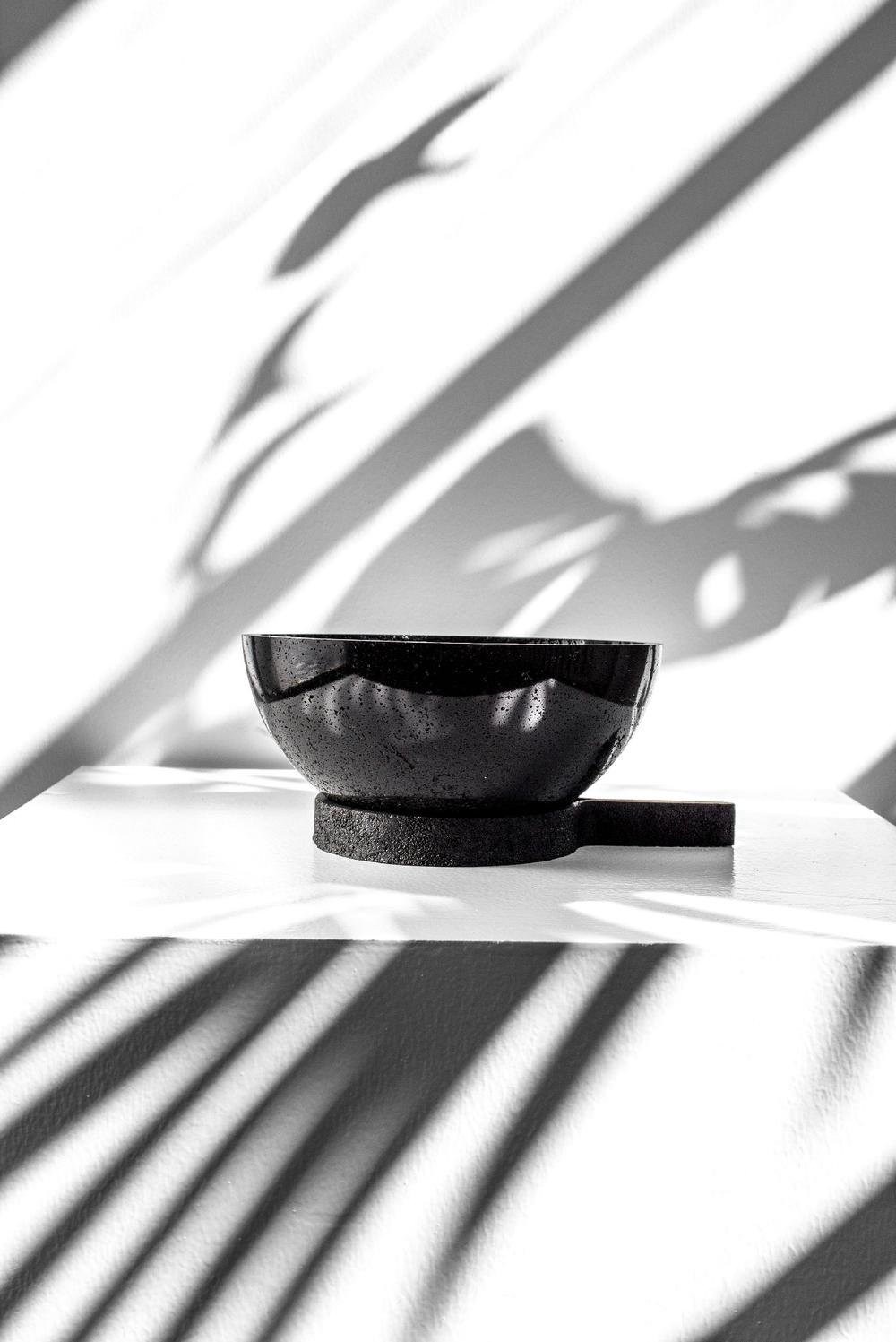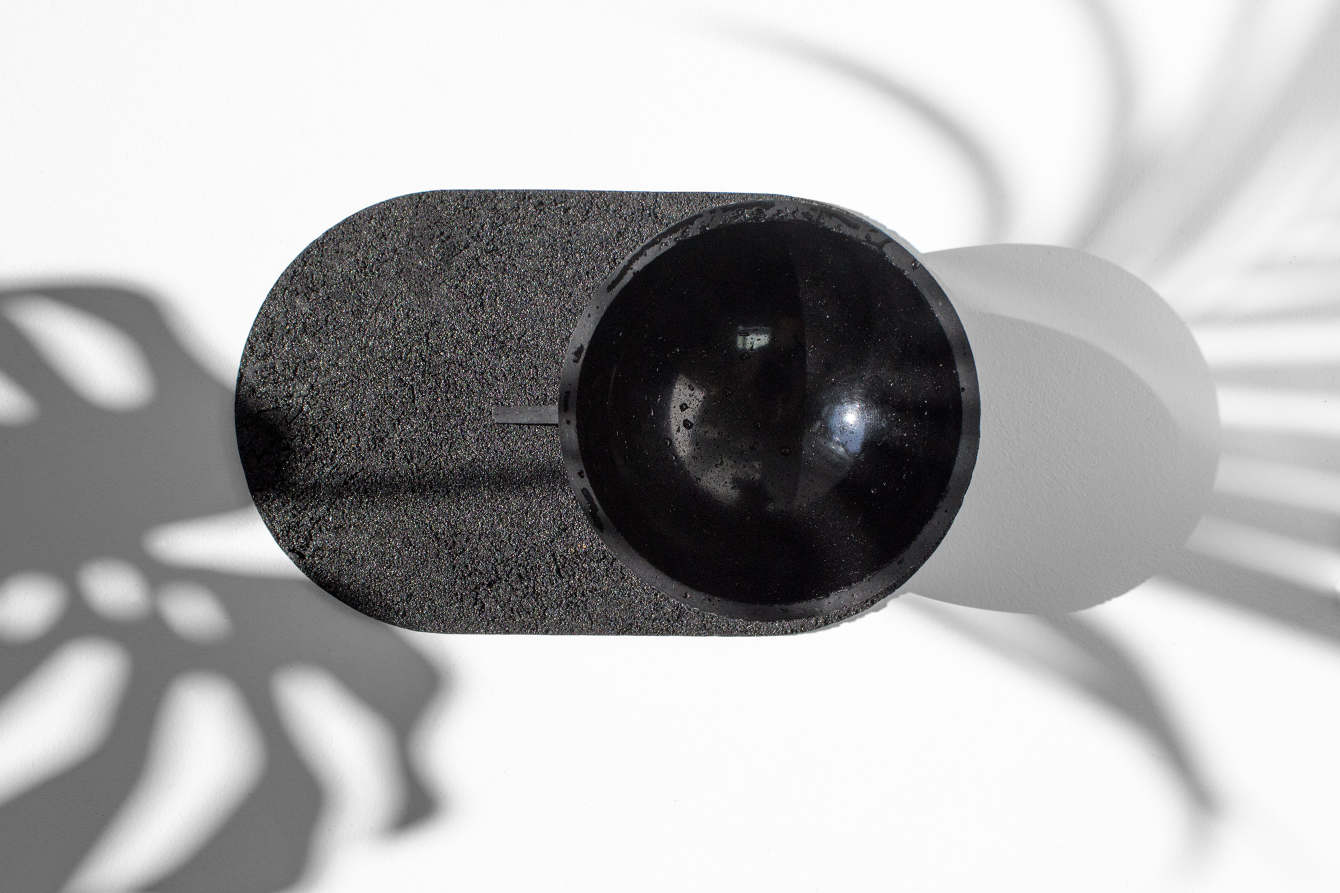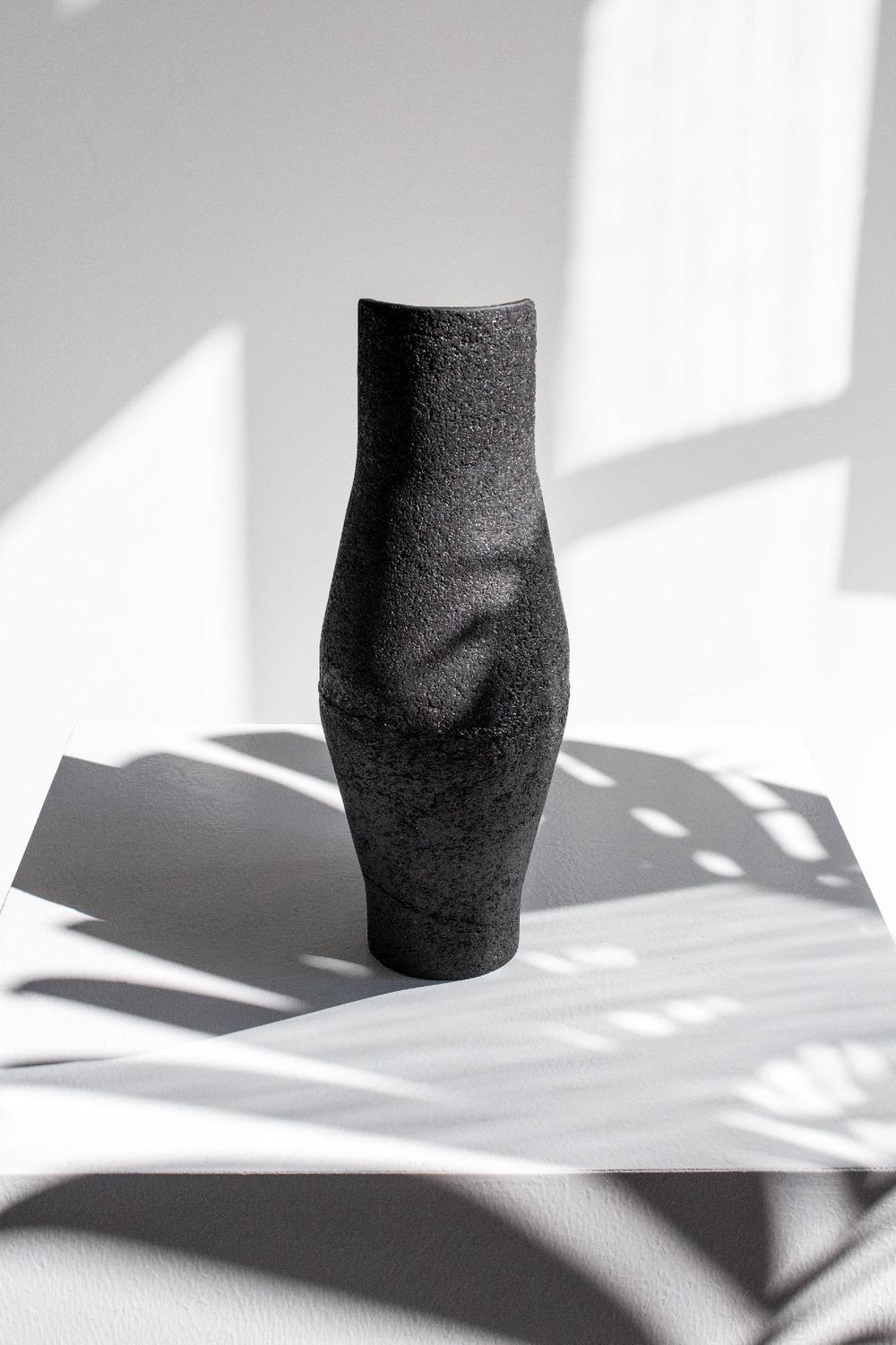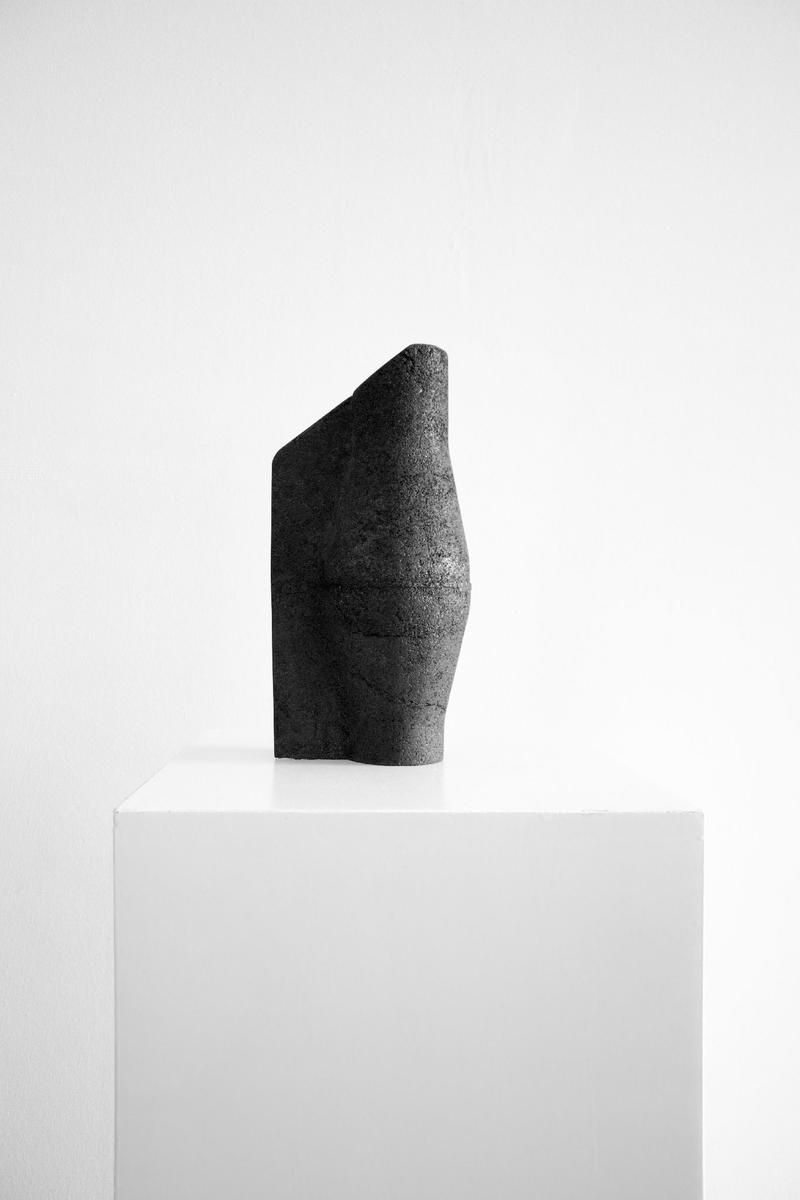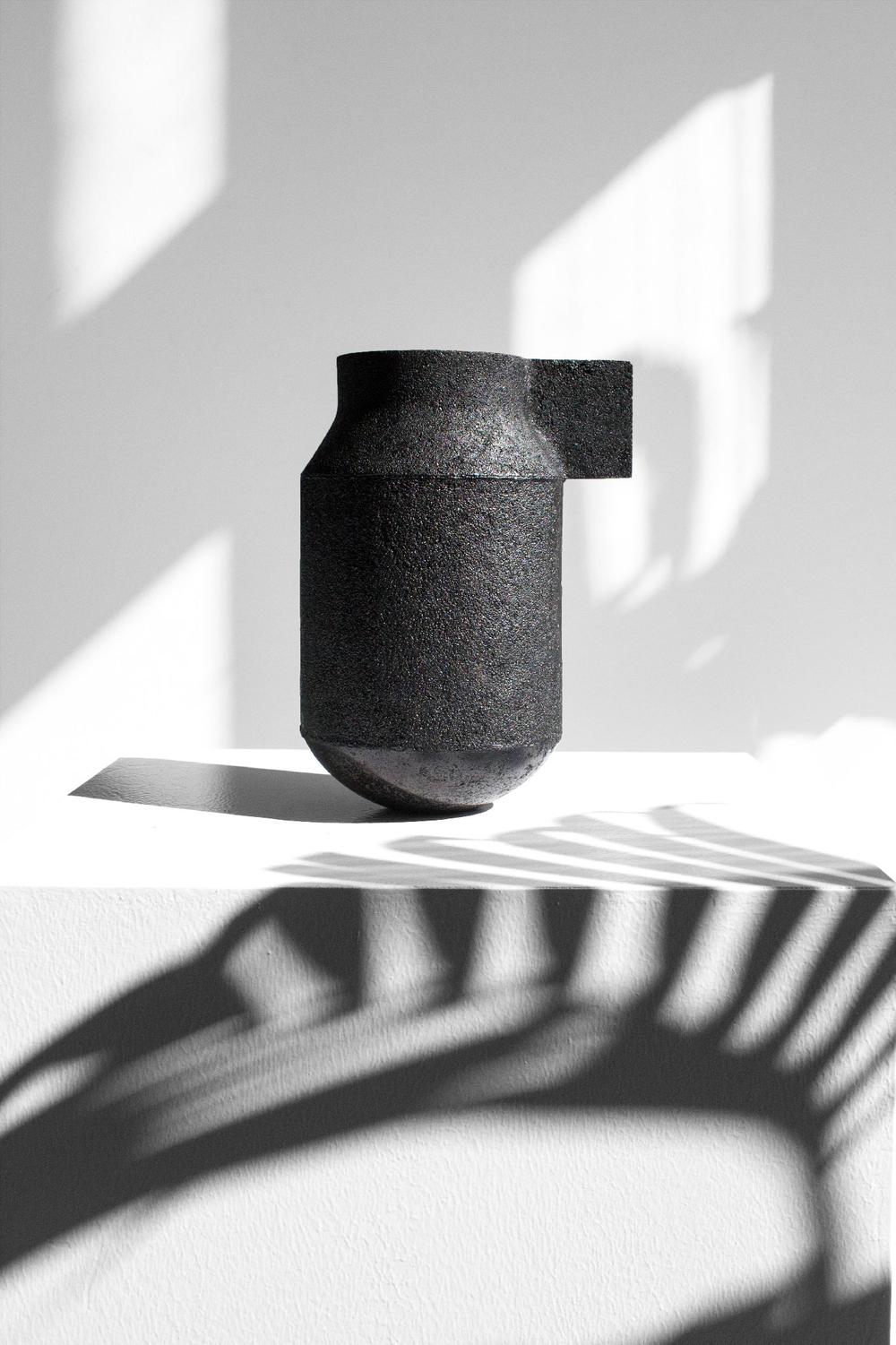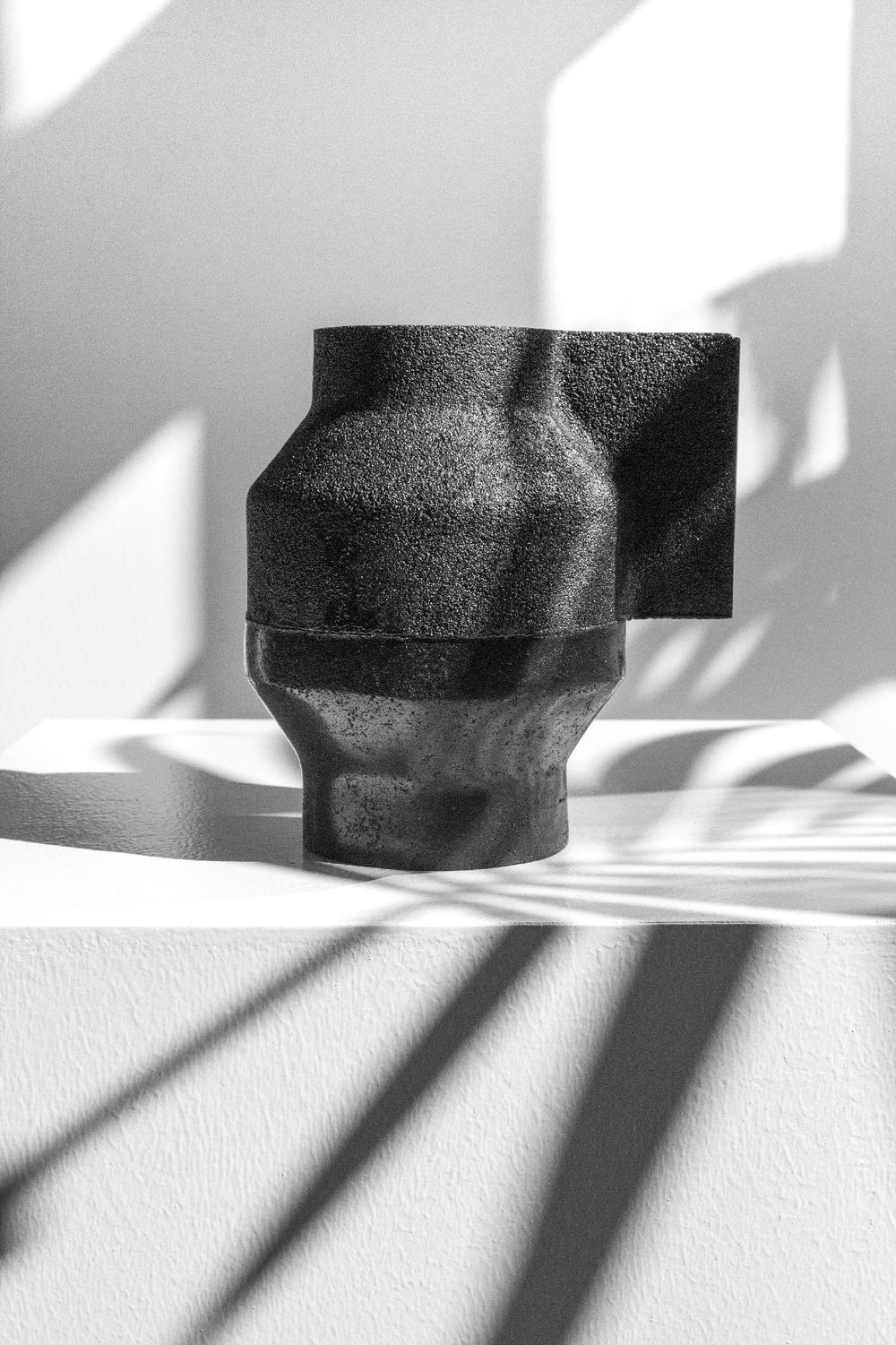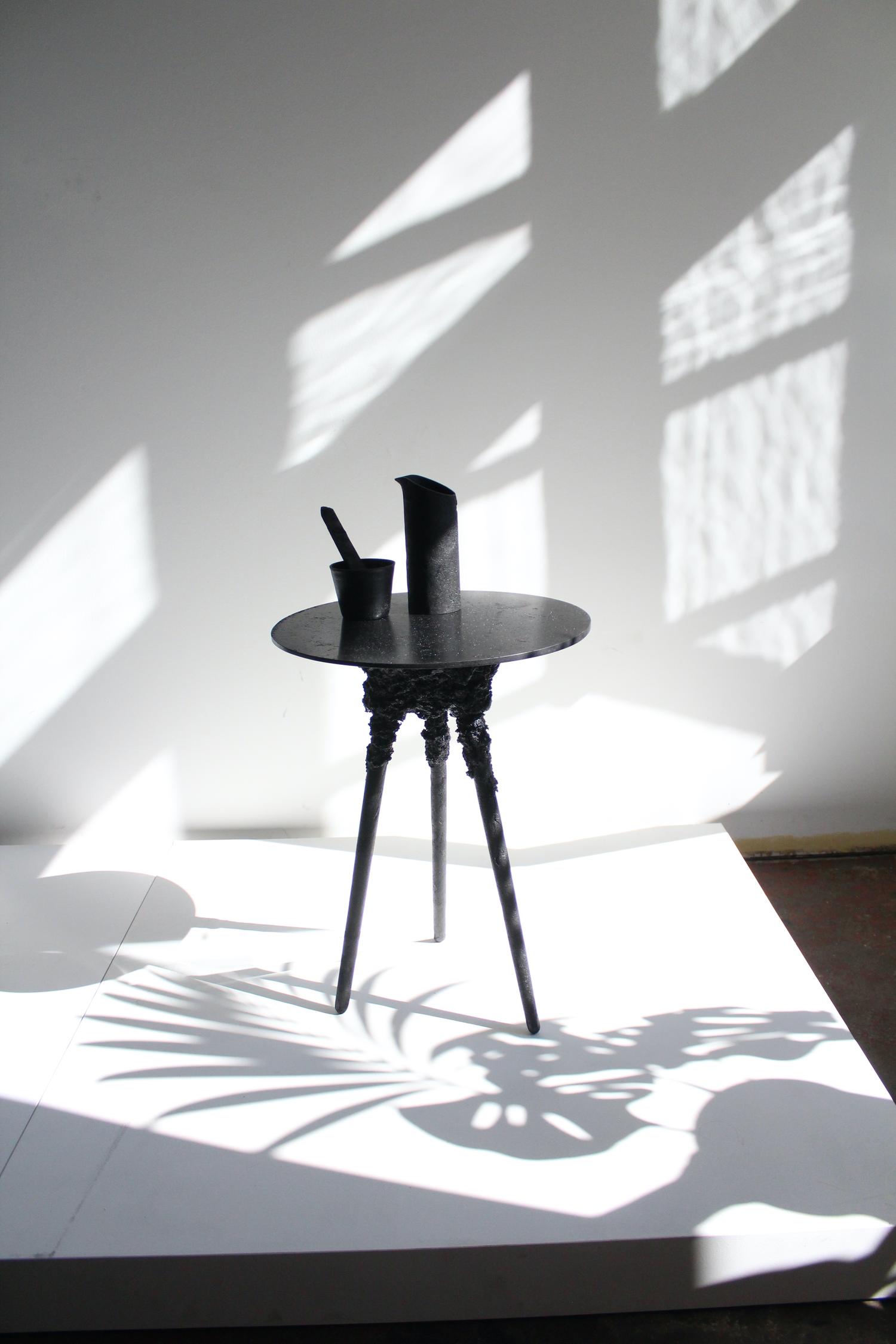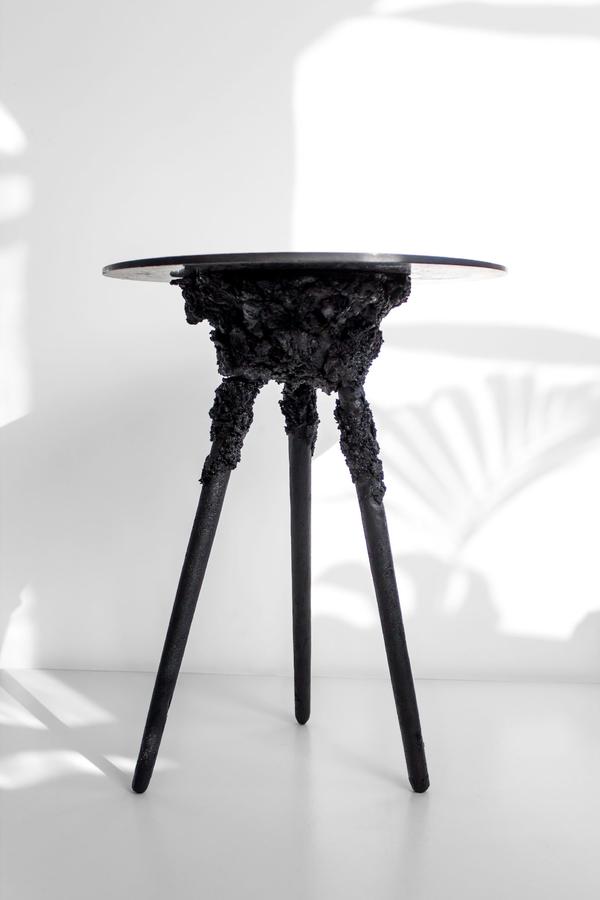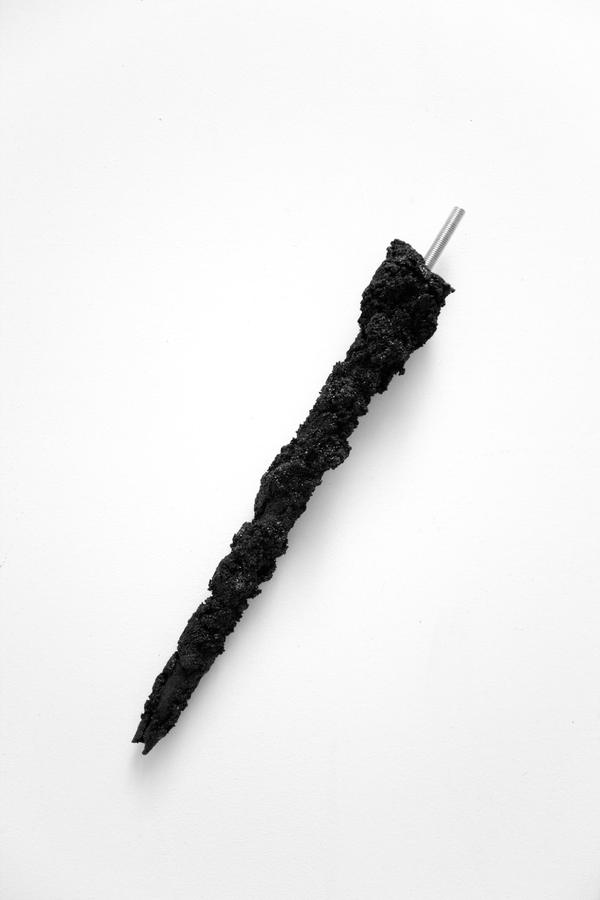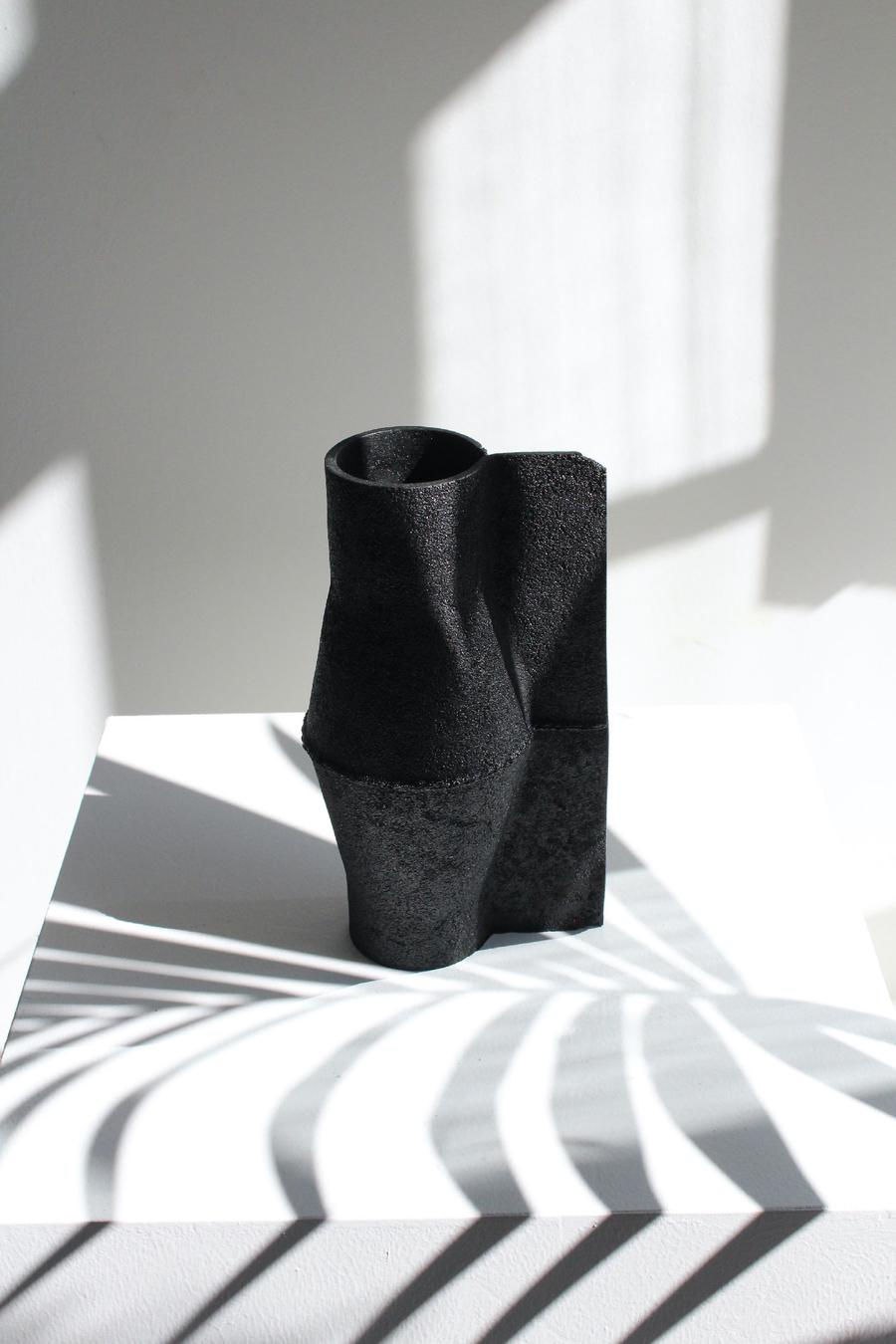Forgotten Collection
2nd edition
“In telling the story of Shellac we may bridge the seas and the ages and seek those far-away-things which throw an interesting light on the many and varied uses of this material.”
The second edition of the Forgotten Collection explores the potentials for the use of shellac as a binder for the development of a new thermoplastic material, combining the natural polymer and bamboo charcoal (created through pyrolysis). By experimenting with compositions, manufacturing methods and moulds different processes were applied to create a variety of effects across the series of the biodegradable and sustainable material, that does not contain any toxic components.
Exploring the entire process of the development and the associated history of the use of natural resins, the material unfolds a complex landscape of questions; about disappearance, its ability to decay and the cyclical relationship of human and non-human entities.
1 Shellac, a story of yesterday, today and tomorrow by Elizabeth Brownell Crandall, Chicago, 1924
Exploring the entire process of the development and the associated history of the use of natural resins, the material unfolds a complex landscape of questions; about disappearance, its ability to decay and the cyclical relationship of human and non-human entities.
1 Shellac, a story of yesterday, today and tomorrow by Elizabeth Brownell Crandall, Chicago, 1924
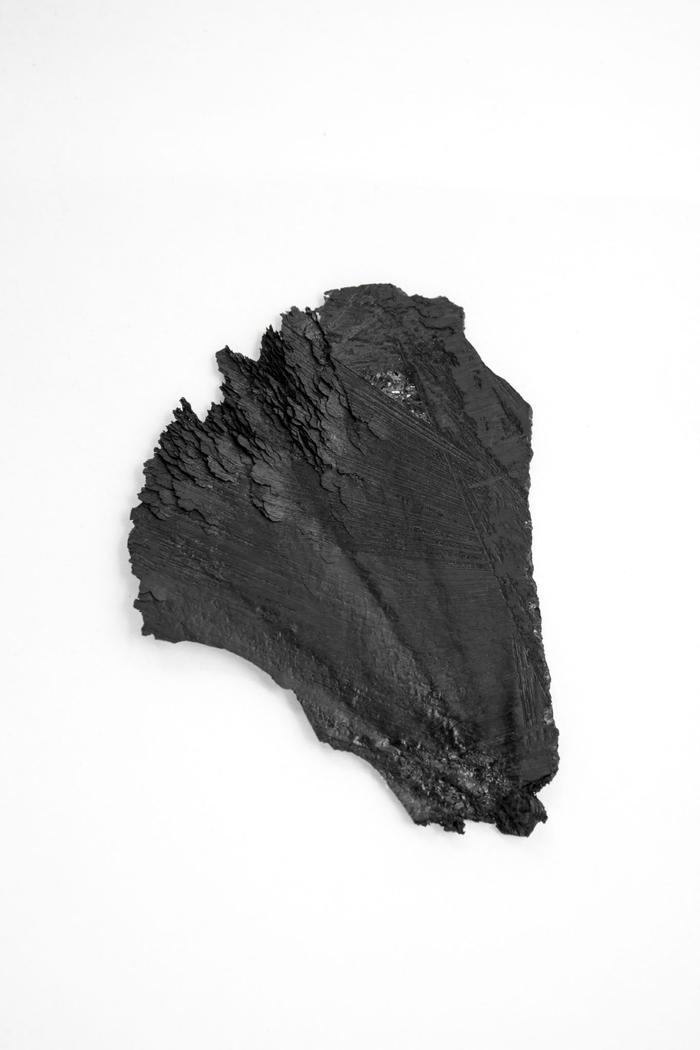

For centuries, natural resins were a precious resource in all cultures - the tears of the gods - were responsible for worldwide trade relations, cultural development and wealth. The human fascination for these malleable substances can be dated back centuries before Christ. They are closely associated with mythical tales, beliefs and rituals that cross all countries and cultures. These sunlight made materials filled the warehouses of early advanced civilizations in the form of small artfully shaped objects and trinkets. Where resins were traded, they also served as currency. Natural resins such as amber, copal and shellac are among the oldest plastic moldable and thus renewable polymers used by man. Shellac is the only resin of animal origin, a natural resin secreted by the female Lac bug, found on trees in forests in India and Thailand. Apart from shellac all resins have in common that they are excretory products of plant metabolism. From 2000 BC shellac has been used and exported ever since.
Shellac is a bioadhesive polymer classified as a natural thermoplastic material that is chemically similar to synthetic polymers. There are few renewable materials that have more utility than shellac. It has been known as a surface coating for centuries, but many old applications of the material have been replaced by petrochemically produced materials.
Shellac is a bioadhesive polymer classified as a natural thermoplastic material that is chemically similar to synthetic polymers. There are few renewable materials that have more utility than shellac. It has been known as a surface coating for centuries, but many old applications of the material have been replaced by petrochemically produced materials.
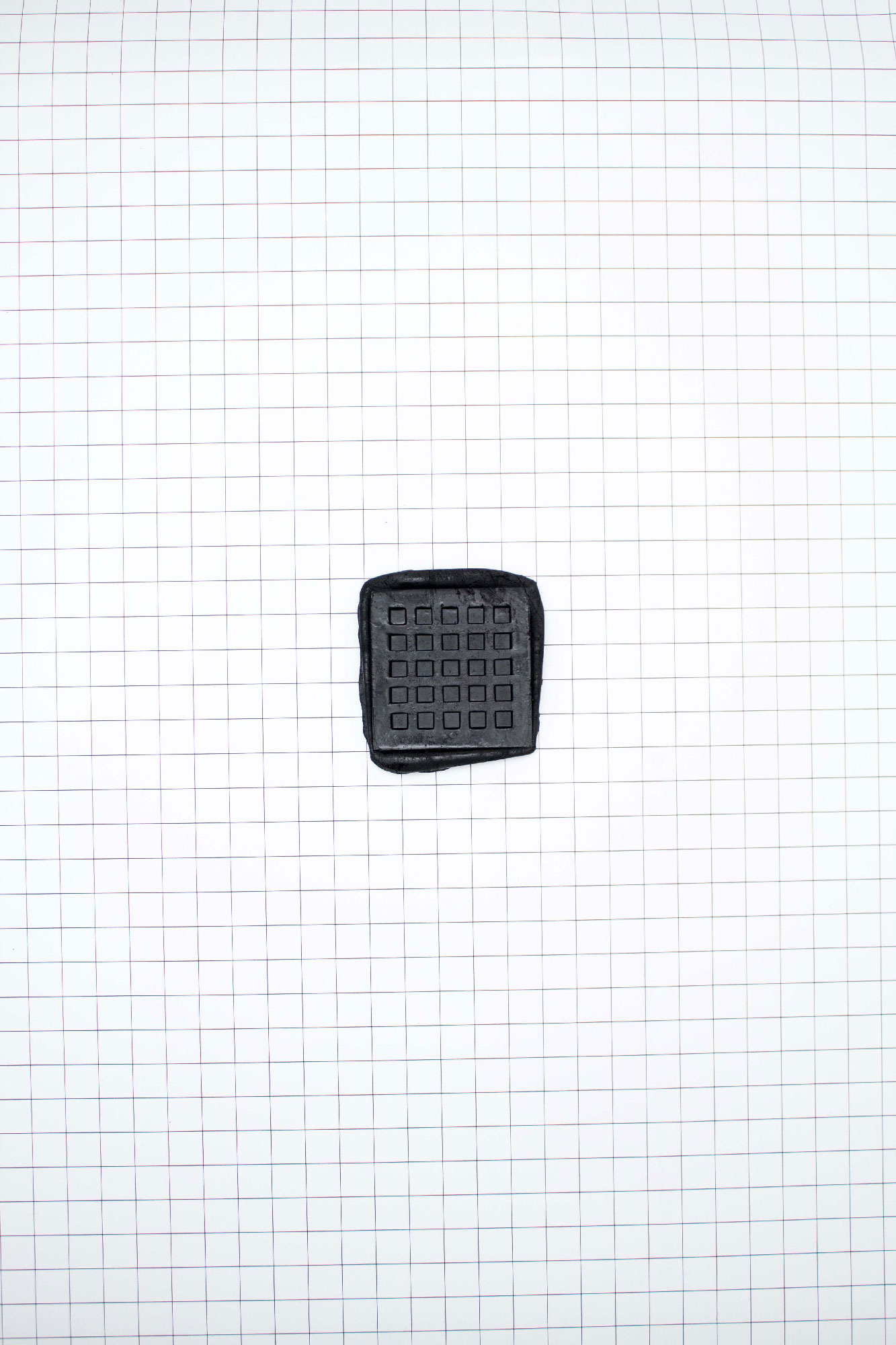
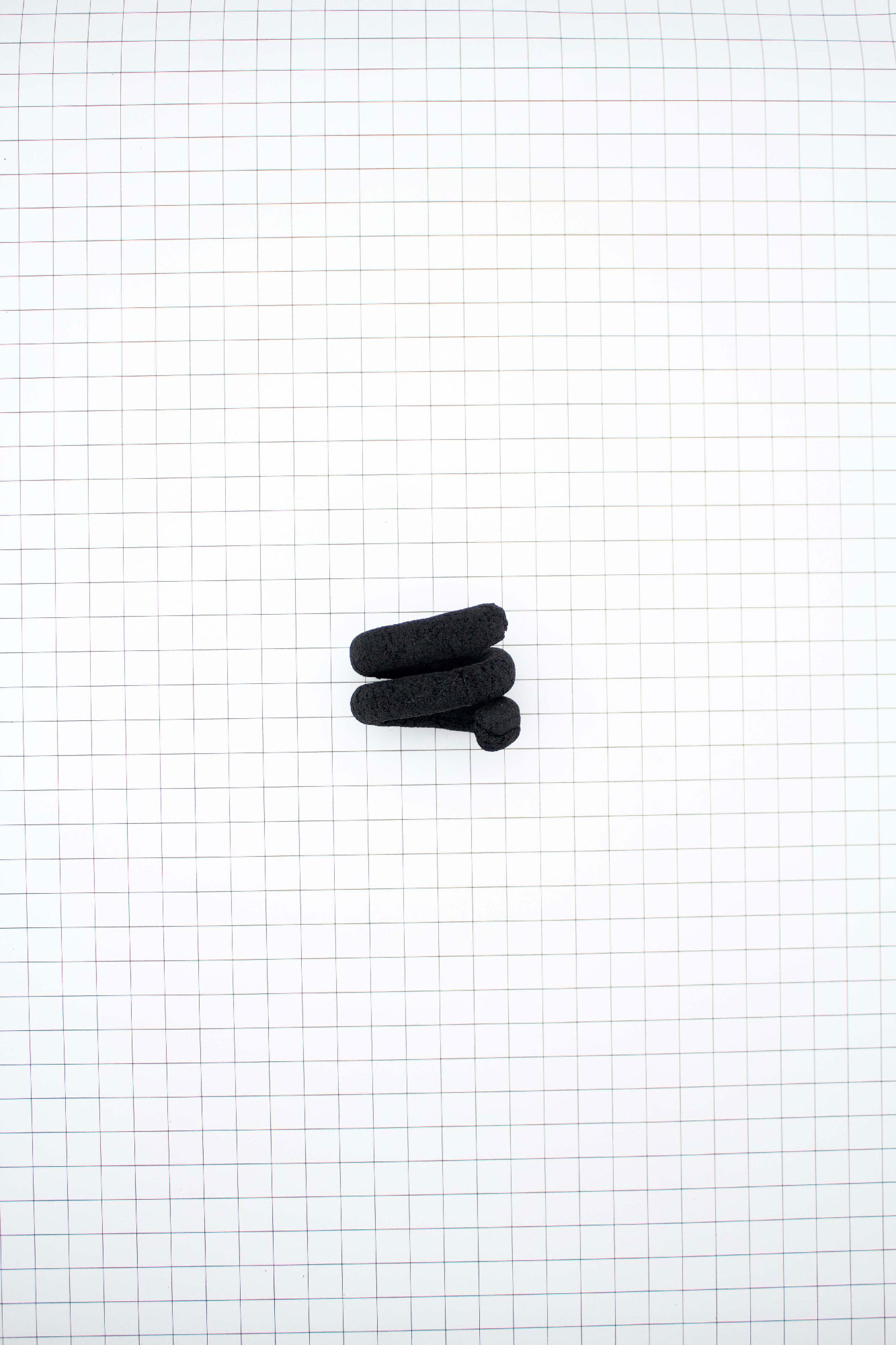
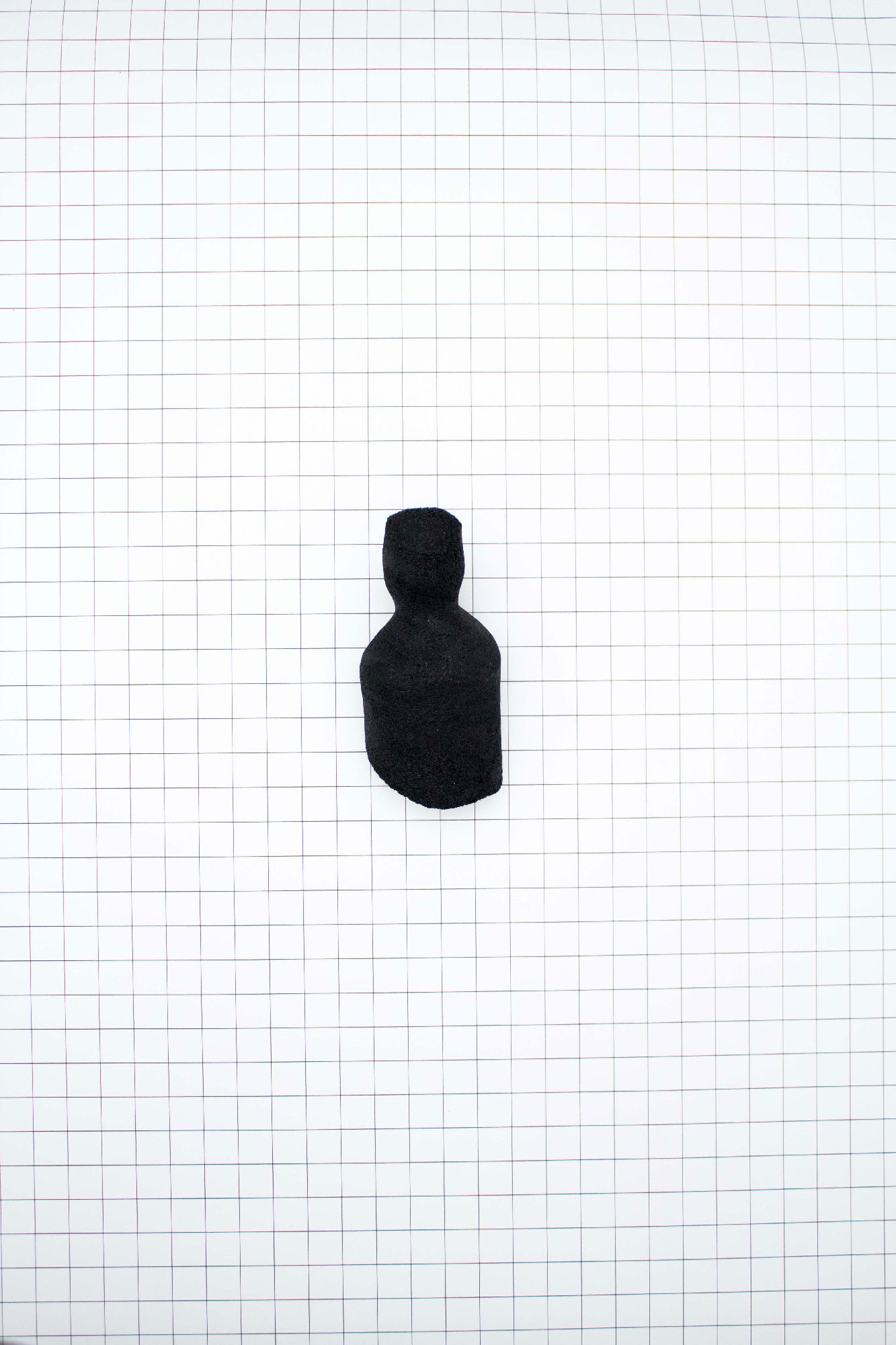

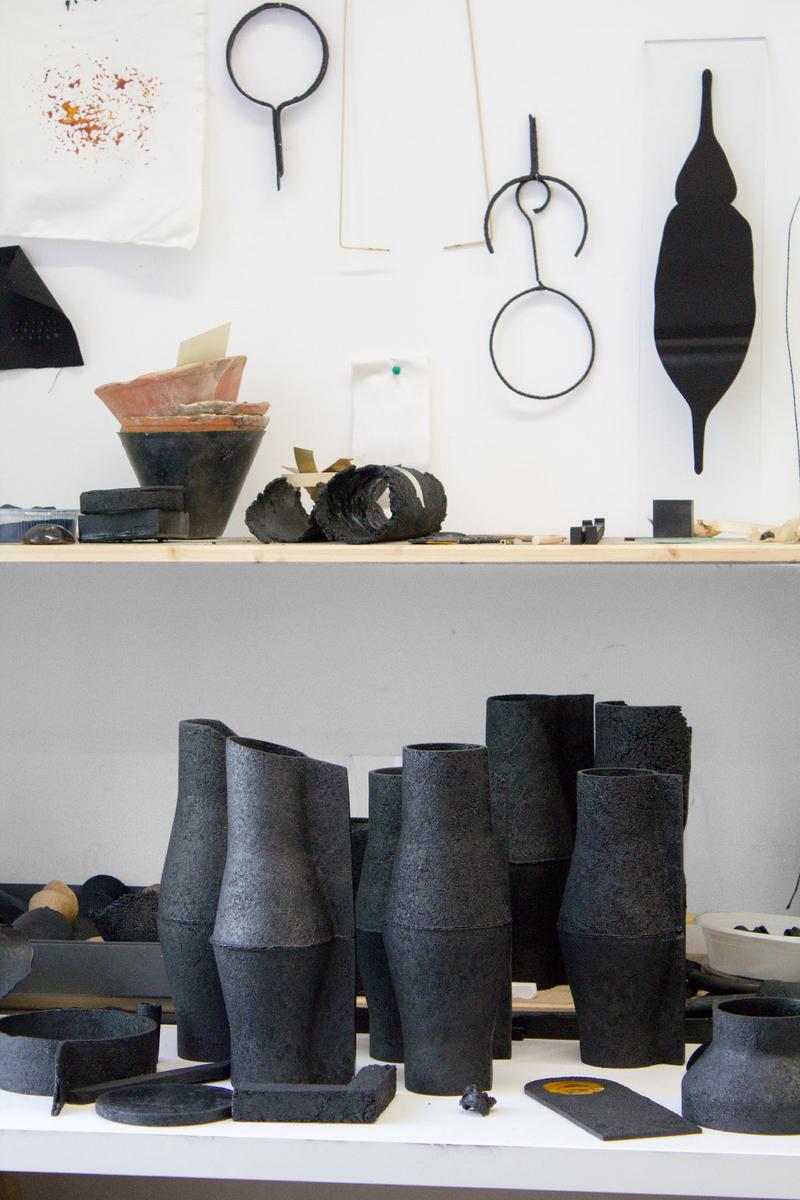


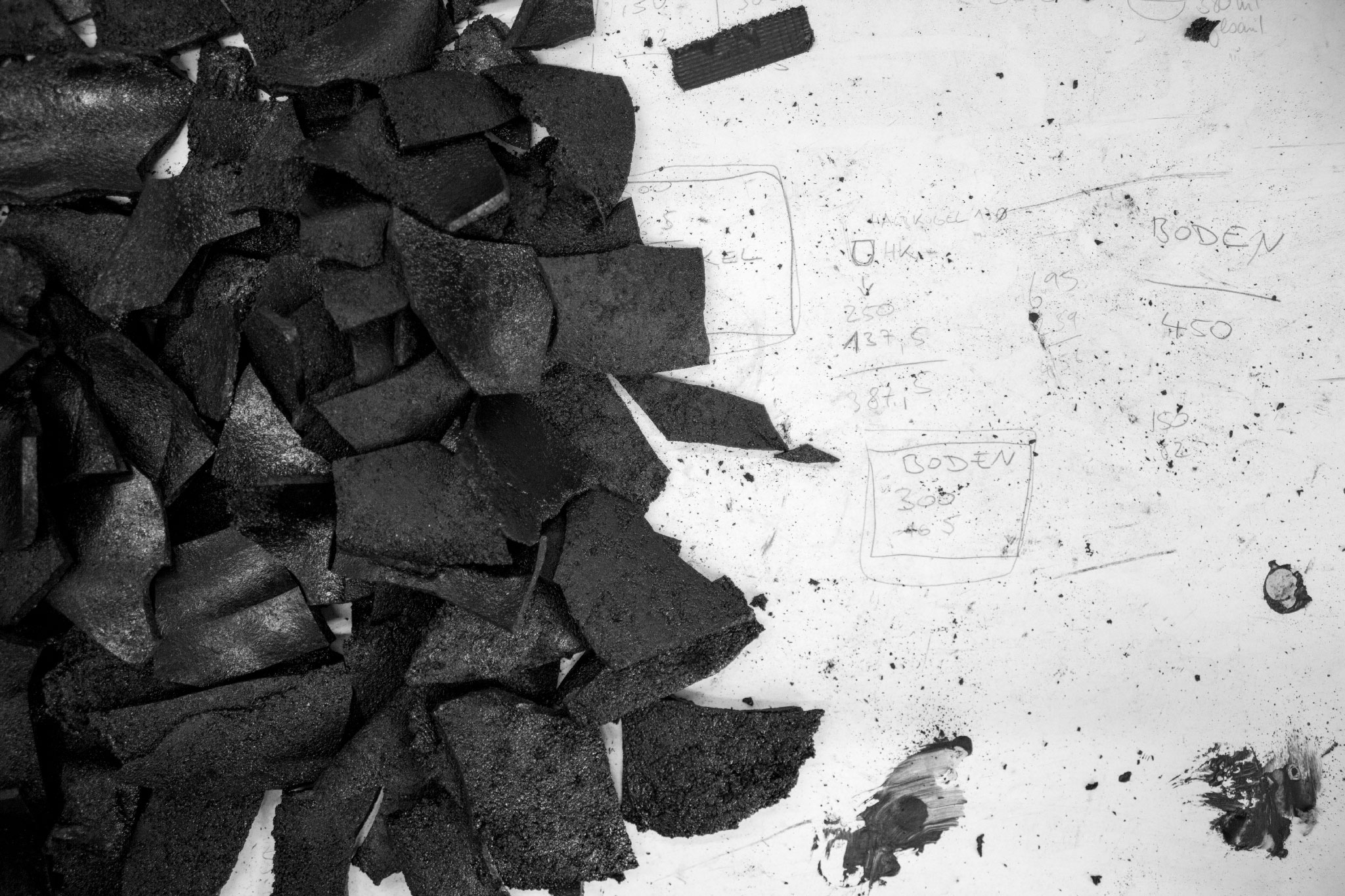
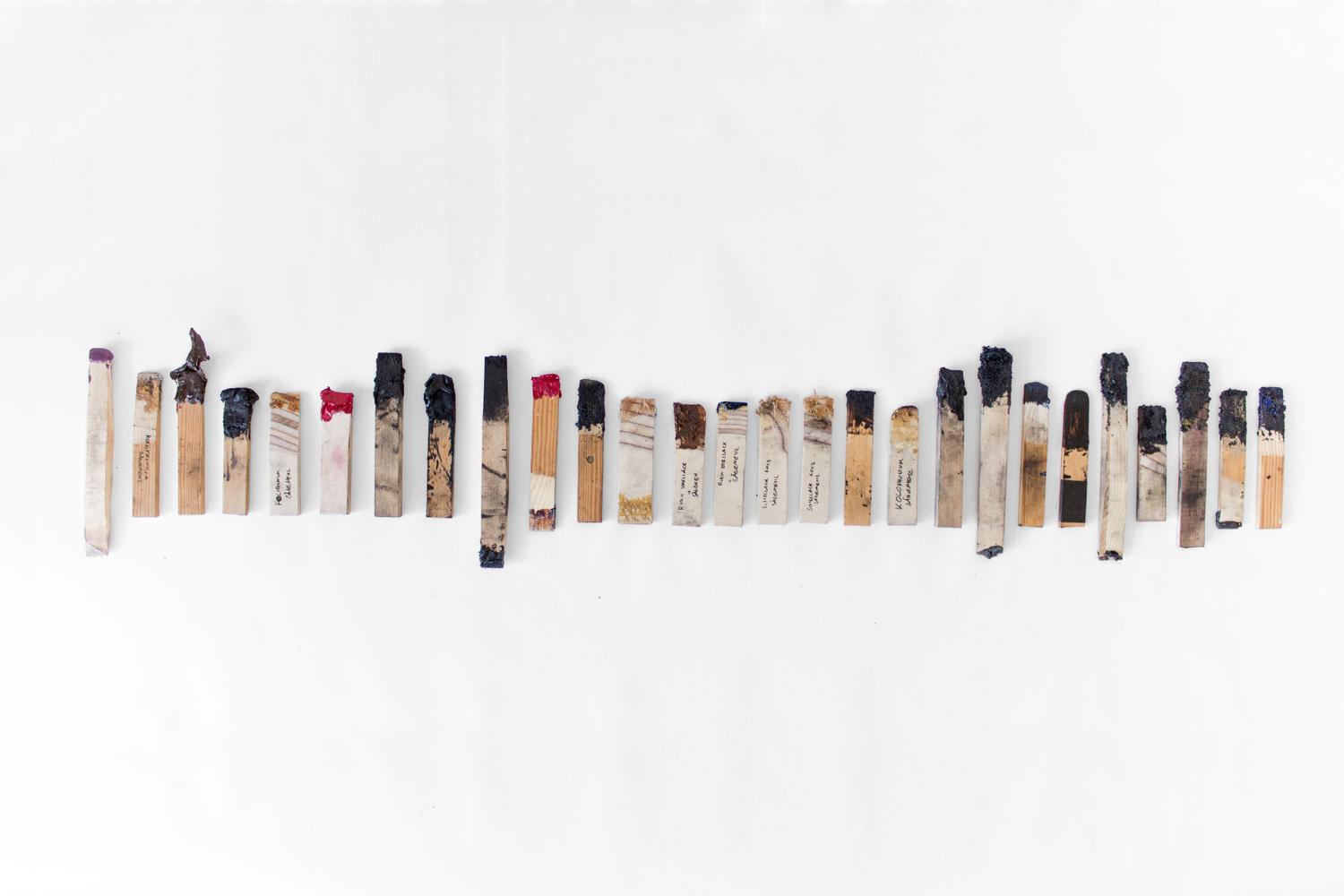
The objects the material have become show the explored qualities in plasticity, crusty to high gloss surfaces, joining, finish and aesthetic depth. Various mixing ratios are used for processing the composite for the different applications of texture, the used moulds, etc. are the result of wide-ranging lab experiments, leading to the current opportunities without yet finding limits to further developments. The substance is condensed, but not unchangeable.
Due to their materiality, the artefacts have tendencies that are inherent to living systems: the ability to change and to return to the forest as nutrients.
The entire collection has been created in a self-defined and so called break- and-remake process. Due to the materials properties, each object can be melted again and transformed once more into another shape. In addition, it draws a new level into the sphere of use and production by creating real spaces for re-makes. Thus the reminiscent space becomes the room to be imagined. The resulting objects form a collection of archetypes of use that pay tribute to the qualities of the material while also reevaluating a role in the preservation and perpetuation of legacies from the past.
The entire collection has been created in a self-defined and so called break- and-remake process. Due to the materials properties, each object can be melted again and transformed once more into another shape. In addition, it draws a new level into the sphere of use and production by creating real spaces for re-makes. Thus the reminiscent space becomes the room to be imagined. The resulting objects form a collection of archetypes of use that pay tribute to the qualities of the material while also reevaluating a role in the preservation and perpetuation of legacies from the past.
